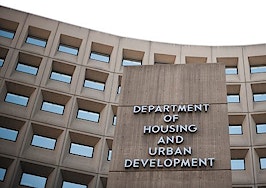Weak rent stabilization laws in New York City are ripe to be exploited, a new piece published on Sunday in The New York Times found. While there are still roughly 1 million rent-stabilized apartments left in New York City, they’re starting to vanish one by one, according to the report.
Since 1993, New York City has lost more than 152,000 rent-regulated apartments due to landlords crossing the rent-stabilized caps, set forth by the Rent Guidelines Board, according to The New York Times. In 2017, the apartments could not be more than $2,733.75 per month for a new renter.
In general, rent-stabilized buildings in New York City: contain six or more units; were built before 1974; and are not co-ops or condos, according to the New York City Rent Guidelines Board. But it gets murkier from there.
To stay rent-stabilized, the unit has to not cross that certain price threshold during a prescribed time period, and there are multiple loopholes that landlords can exploit to send rents skyrocketing.
Specifically, New York City law allows for a vacancy bonus — a set increase based on the number of years the previous tenant lived there. That encourages landlords to do whatever is in their right to get the apartment vacant.
Landlords can also tack on the cost of renovation to the new unit, so in many cases — like the instances reported in The New York Times — landlords are harassing tenants to get vacant apartments, then jacking up the costs for the new tenant. Once the landlord gets the apartment to cross that threshold, it disappears from the rent regulated rolls.
In one of New York City’s most high-profile cases of tenant harassment over the past few years, notorious slumlords Joel and Aaron Israel, along with their management company JBI Management, were indicted for allegedly deliberately destroying tenants apartments — including heat, hot water and electrical services — to get them to move out.
“We simply will not allow the hardworking people of Brooklyn to be intimidated and harassed or have their apartments destroyed by those who seek to force them out just to make money from the lucrative real estate market,” the former Brooklyn District Attorney, the late Ken Thompson, said shortly after Joel and Aaron Israel were arrested in 2015.
“Rent-stabilized apartments are designed to protect tenants and cannot be turned into market value apartments through intimidation and fraud. It’s against the law, and we will investigate and vigorously prosecute those who harass and prey on innocent tenants in Brooklyn.”
Despite that, The New York Times reported multiple instances of similar misconduct. Tenants at 25 Grove Street in the West Village reported conditions of dust — a combination of brick and lead-based paint — percolated throughout the hallways, from the gutted apartments in the building.
There have also been instances where building owners simply lied about the number of rent-regulated units in a building, either to charge more in rent and hope not to get caught or to facilitate a higher for-sale price.
In March, the Associated Press reported that Jared Kushner, the president’s son-in-law, was accused of filing false documents claiming buildings he owned in Astoria had zero rent-regulated tenants. When he bought the three buildings in 2015, records showed that there were hundreds of rent-regulated tenants.
The city and state have made public commitments to fight the sort of harassment The New York Times is reporting. In 2015, New York City launched a tenant harassment task force, and last year, former Attorney General Eric Schneiderman unveiled new laws to make the prosecution of bad landlords easier.
“Our current laws are outdated, ineffective and totally inadequate to keep tenants safe from unscrupulous landlords seeking to unlawfully evict New York families,” Schneiderman said in a release. “With affordable housing as scarce as ever, it’s time for lawmakers to give prosecutors new tools to stop the menacing — and often dangerous — measures these landlords use to force tenants out of their homes.”





